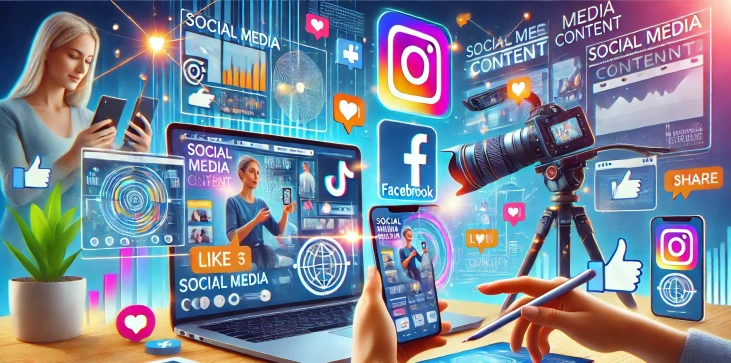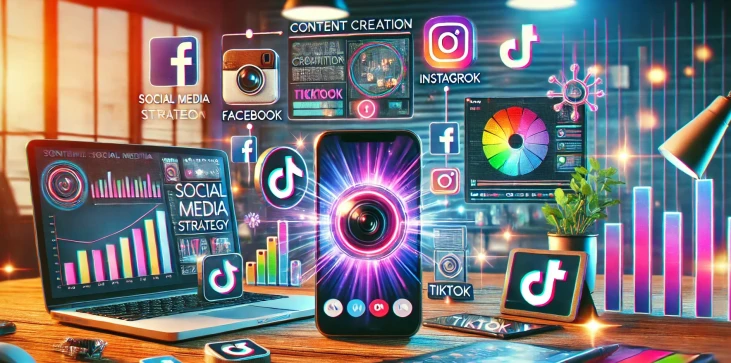
In the ever-evolving world of social media, creating diverse types of content is essential for reaching and engaging your target audience. Whether you're using Facebook, Instagram, or TikTok, the types of content you choose to publish will directly influence your brand's reach, engagement, and overall success. In this guide, we’ll explore the various types of content you can leverage to build a powerful online presence, grow your follower base, and maximize engagement on social platforms. The importance of a well-rounded content strategy cannot be overstated. From video marketing and user-generated content to blogs and infographics, diversifying your approach is key to standing out in the crowded digital space. Let’s break down the most effective content types for your social media strategy and how to best utilize each.
Video content is by far the most engaging type of content on social media platforms. Platforms like TikTok and Instagram Reels have revolutionized how we consume content, making short, snappy videos the norm. Videos capture attention quickly, convey complex messages, and can be used to demonstrate products or services in action. With Instagram now supporting longer video lengths and TikTok expanding its video features, brands have an excellent opportunity to connect with their audience on a deeper level through storytelling and entertainment.
Images and infographics are among the most shareable and engaging types of content. They allow for quick communication of key messages, making them perfect for platforms like Instagram and Facebook. Infographics, in particular, can simplify complex data or concepts, making them more digestible for your audience. Visual content is not only attention-grabbing but also memorable, as people tend to remember images better than text.
User-Generated Content (UGC) is a powerful tool for social proof. When your audience creates content featuring your products or services, it adds credibility and builds trust. UGC can be anything from customer testimonials, product reviews, to photos and videos shared by your followers. Brands can leverage UGC on all platforms—TikTok, Instagram, and Facebook—to create an authentic connection with their community and boost engagement rates. Encouraging your audience to create content around your brand can also lead to viral trends, especially on TikTok.
While short-form content dominates social media, long-form content like blog posts and articles are still invaluable for providing in-depth information. Blogging allows you to showcase expertise, delve deeper into topics, and drive traffic to your website through platforms like Facebook. Regularly posting high-quality blog content helps with SEO, builds authority, and keeps your audience informed. Share your blog posts on social media channels to engage users who are interested in learning more about specific subjects relevant to your industry.
In today’s digital landscape, understanding the types of content available to you is key to developing a successful social media strategy. From videos and images to user-generated content and blogs, each type plays a unique role in engaging your audience and achieving your marketing goals. Experimenting with different content formats and measuring their effectiveness can help you identify what resonates best with your audience. A balanced content strategy that includes a mix of these types will ensure your brand remains relevant, engaging, and memorable.

TikTok thrives on short, entertaining videos. The platform is built for video content that is catchy, authentic, and often informal. Challenges, trends, and user-generated content are also effective in driving engagement. Brands that participate in trending challenges or create their own challenges tend to see increased visibility and interaction.
Brands can encourage their followers to share content featuring their products by creating specific hashtags or running contests. Reposting UGC on Instagram Stories or in the main feed not only builds community but also shows appreciation for the audience. UGC adds a layer of authenticity and trust, as users are more likely to trust content from their peers rather than brands directly.
Infographics are effective because they simplify complex information into an easy-to-digest visual format. They are perfect for summarizing data, making comparisons, or explaining concepts. Infographics are shareable and help brands communicate key messages quickly, making them ideal for platforms like Facebook and Instagram where visual content performs well.